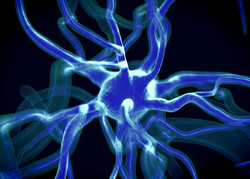A biotech tool to measure neuron activity
Gamma-aminobutyric acid (GABA) is a molecule found in all mammals that inhibits neurotransmission by acting on the GABA receptor protein. The protein responds by ejecting chloride ions from the neuron to inhibit neuronal signals. Dysfunction in the GABA receptor protein can result in Alzheimer's disease, epilepsy and schizophrenia. The EU-funded IMAGINGGABA (Optical real-time imaging of inhibitory GABAA receptors activity using chimeric GABA channel subunit) initiative aimed to modify the GABA receptor protein so that receptor activity could be easily monitored. A tool like this should help researchers better understand this important protein. Researchers began by attaching a chloride sensor molecule to the GABA receptor, which emits a fluorescent signal based on chloride concentration near it. This can be used to estimate GABA receptor activity. Once this was achieved, IMAGINGGABA tested the synthetic GABA receptor thoroughly. Researchers showed that it is normally formed and distributed within mammalian neuron cells grown in the laboratory, and interacts normally with other proteins and molecules. Next, they calibrated the fluorescent signal and demonstrated that it could be used to measure small changes in chloride concentration. Scientists successfully measured changes caused by various neurotransmitters, including GABA and isoguvacine. IMAGINGGABA has produced a useful and functional tool to study the crucially important GABA receptor in human brain cells. This will allow new research into brain biochemistry and shed light on serious diseases like schizophrenia.
Keywords
Neuron, fluorescent signal, GABA receptor, chloride, schizophrenia, neuron cells

